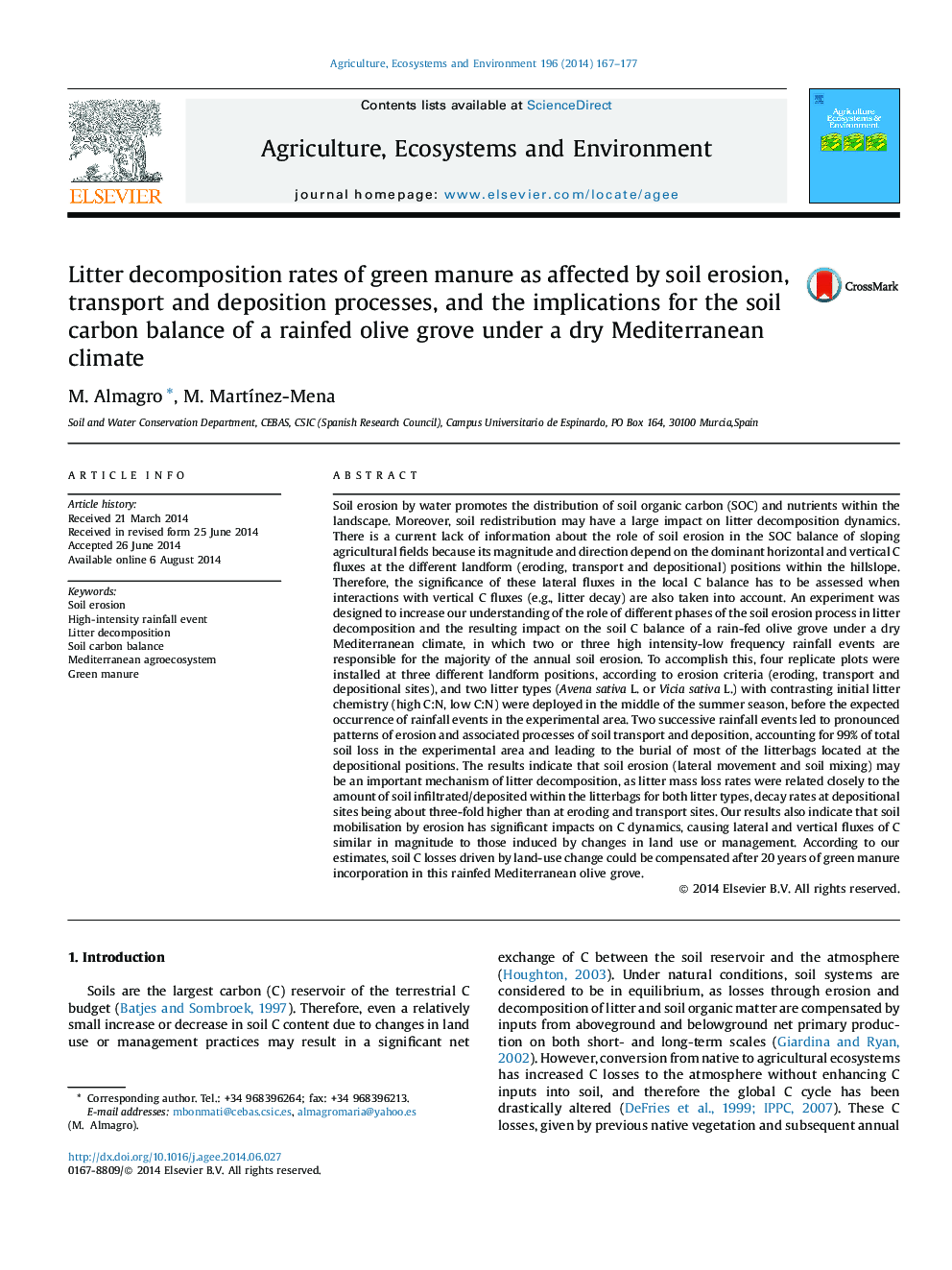| کد مقاله | کد نشریه | سال انتشار | مقاله انگلیسی | نسخه تمام متن |
|---|---|---|---|---|
| 2414005 | 1552056 | 2014 | 11 صفحه PDF | دانلود رایگان |
• Two rainfall events accounted for 99% of total soil loss in the agricultural field.
• Soil erosion is an important mechanism of green manure decomposition in hilly fields.
• Green manure decomposed three-times faster at depositional than at eroding and transport sites.
• Factors controlling litter decomposition varied at different landform positions.
• Green manure incorporation is an efficient tool to recover SOC losses by land-use.
Soil erosion by water promotes the distribution of soil organic carbon (SOC) and nutrients within the landscape. Moreover, soil redistribution may have a large impact on litter decomposition dynamics. There is a current lack of information about the role of soil erosion in the SOC balance of sloping agricultural fields because its magnitude and direction depend on the dominant horizontal and vertical C fluxes at the different landform (eroding, transport and depositional) positions within the hillslope. Therefore, the significance of these lateral fluxes in the local C balance has to be assessed when interactions with vertical C fluxes (e.g., litter decay) are also taken into account. An experiment was designed to increase our understanding of the role of different phases of the soil erosion process in litter decomposition and the resulting impact on the soil C balance of a rain-fed olive grove under a dry Mediterranean climate, in which two or three high intensity-low frequency rainfall events are responsible for the majority of the annual soil erosion. To accomplish this, four replicate plots were installed at three different landform positions, according to erosion criteria (eroding, transport and depositional sites), and two litter types (Avena sativa L. or Vicia sativa L.) with contrasting initial litter chemistry (high C:N, low C:N) were deployed in the middle of the summer season, before the expected occurrence of rainfall events in the experimental area. Two successive rainfall events led to pronounced patterns of erosion and associated processes of soil transport and deposition, accounting for 99% of total soil loss in the experimental area and leading to the burial of most of the litterbags located at the depositional positions. The results indicate that soil erosion (lateral movement and soil mixing) may be an important mechanism of litter decomposition, as litter mass loss rates were related closely to the amount of soil infiltrated/deposited within the litterbags for both litter types, decay rates at depositional sites being about three-fold higher than at eroding and transport sites. Our results also indicate that soil mobilisation by erosion has significant impacts on C dynamics, causing lateral and vertical fluxes of C similar in magnitude to those induced by changes in land use or management. According to our estimates, soil C losses driven by land-use change could be compensated after 20 years of green manure incorporation in this rainfed Mediterranean olive grove.
Journal: Agriculture, Ecosystems & Environment - Volume 196, 15 October 2014, Pages 167–177
